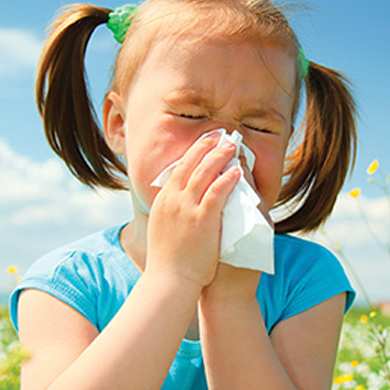
IIn children and adolescents with asthma, concomitant rhinitis is ubiquitous and intractable, but how the 2 conditions are related is incompletely understood. Thus the authors of a recent study set out to determine the prevalence of rhinitis and its phenotypes in pediatric patients with asthma, evaluate the severity of their rhinitis symptoms and medication use, and probe the associations between rhinitis and asthma.
The investigators followed the cases of 749 children with asthma who participated in the Asthma Phenotypes in the Inner-City (APIC) study, an epidemiologic, multicenter, cross-sectional study sponsored by National Institute of Allergy and Infectious Diseases and aimed at defining the phenotypic characteristics of difficult-to-treat asthma among children aged 6 to 17 years who received 1 year of algorithm-based asthma and rhinitis therapy.
Predefined phenotypes among APIC participants were identified by a combination of symptoms and results of skin tests and serum-specific immunoglobulin E tests.
Of the 619 children with asthma who completed at least 4 of 6 visits over the course of 1 year, 93.5% had rhinitis. Perennial allergic rhinitis with seasonal exacerbations (PARSE) was the most severe type and the most common type, affecting 34.2% of the children. Nonallergic rhinitis was least severe and least common, affecting 11.2% of the participants.
They also found that most children continued to have rhinitis despite using nasal corticosteroids and/or oral antihistamines, that rhinitis was worse in participants with difficult-to-control asthma, and that difficult–to-control asthma patterns corresponded with seasonal rhinitis patterns.
The investigators concluded that their study “offers strong support to the concept that rhinitis and asthma represent the manifestations of one disease in two parts of the airways,” and described the clinical implications of the findings as follows:
“Clinicians should always query for rhinitis symptoms in children with asthma and should be aware that these symptoms will frequently remain uncontrolled with conventional treatment.”
REFERENCE:
Togias A, Gergen PJ, Hu JW, et al. Rhinitis in children and adolescents with asthma: ubiquitous, difficult to control, and associated with asthma outcomes [published online September 11, 2018]. J Allergy Clin Immunol. https://doi.org/10.1016/j.jaci.2018.07.041.